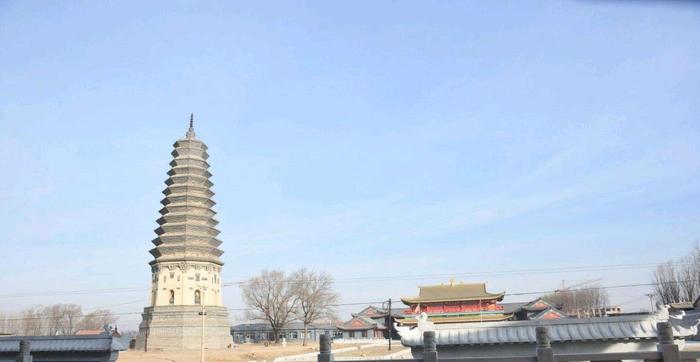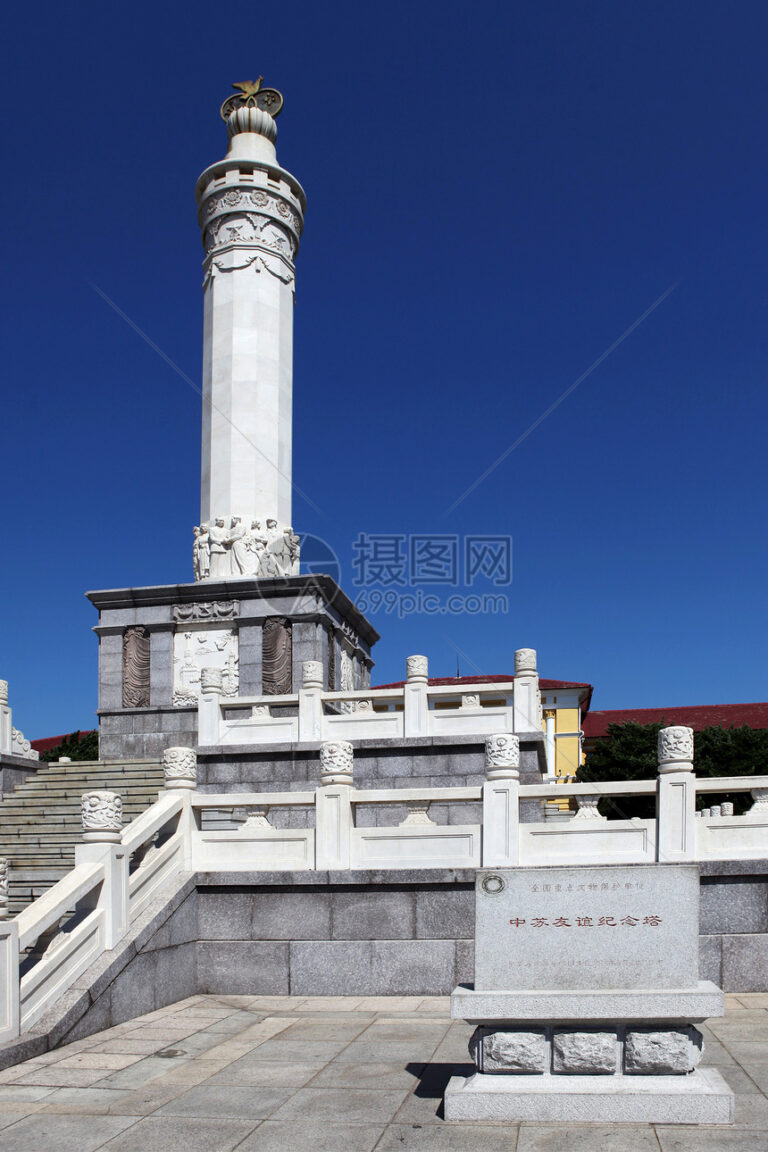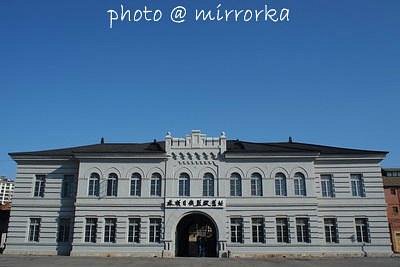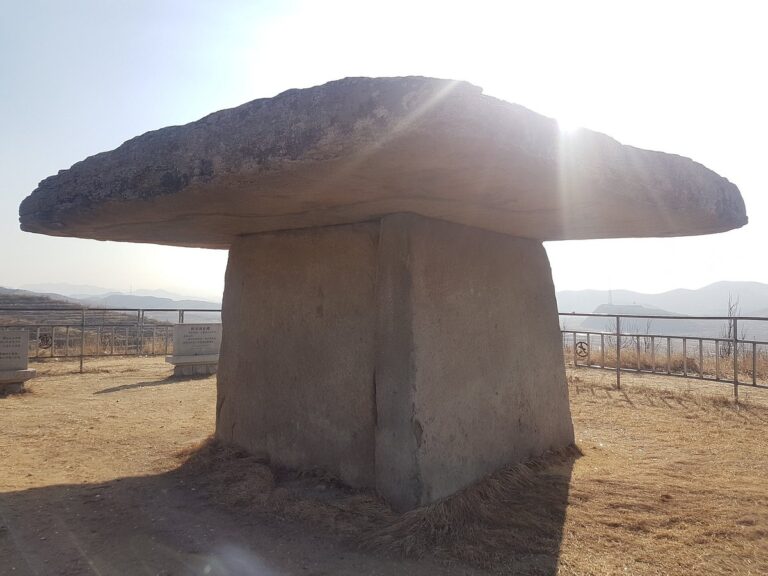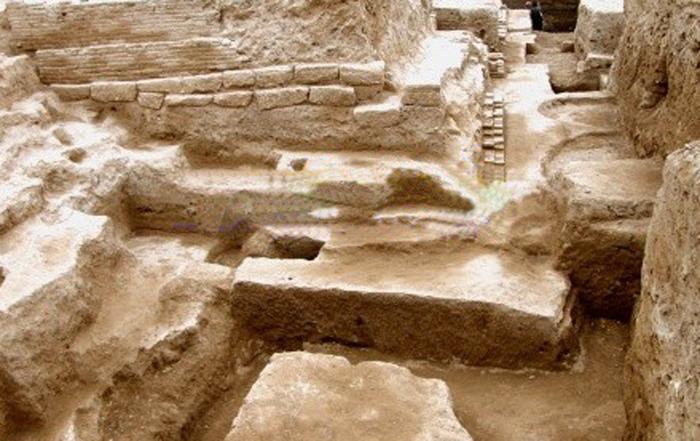Unveiling the Mysteries of Dandong’s Dongshan Dashigai Mu
An Essential Guide to Visiting Dandong Dongshan Dashigai Mu
In This Guide
- An Essential Guide to Visiting Dandong Dongshan Dashigai Mu
- The Rich History of Dandong Dongshan Dashigai Mu
- Main Highlights: What to See at Dandong Dongshan Dashigai Mu
- Planning Your Visit: A Practical Guide
- Tickets, Hours, and Booking
- How to Get There
- Local Cuisine and Accommodation
- Frequently Asked Questions
- Final Thoughts on Your Trip
Nestled in the picturesque landscape of northeastern China, the Dandong Dongshan Dashigai Mu, or East Mountain Great Stone Tomb, stands as a remarkable testament to the region’s rich history and cultural heritage. Located approximately nine kilometers northeast of Fengcheng, this ancient burial site is perched on the southern slopes of the majestic Laohei Mountain, offering breathtaking views at an elevation of 589.4 meters.
Spanning roughly 5,000 square meters, the tomb complex comprises a series of meticulously arranged burial mounds—ten atop the ridge and fifteen on the plateau below. Some of these stone-sealed graves peek above the surface, while others remain hidden beneath the earth, shrouded in mystery. Dating back to the Bronze Age, the site is recognized as a key cultural artifact, providing invaluable insights into the burial practices and customs of ancient societies in the Dandong area.
Initial excavations in 1983 revealed an array of artifacts, including pottery and stone tools, which have since fueled scholarly research into the Bronze Age cultures that once thrived here. The systematic arrangement of grave goods, such as pottery placed methodically to the right of the head, offers a glimpse into the rituals and beliefs of the time. In 1989, a collaborative archaeological effort further cemented the site’s significance, confirming its status as a national key cultural relic under protection.

Dandong Dongshan Dashigai Mu.
Visiting the East Mountain Great Stone Tomb is not only an opportunity to step back in time but also to immerse oneself in the breathtaking natural beauty that surrounds it. This site is part of a broader tapestry of historical landmarks in the region, making it an essential stop for travelers seeking to understand the rich narrative of China’s past while enjoying the serenity of its landscapes. As you embark on this journey, prepare to explore a blend of history, culture, and stunning scenery that defines this hidden gem in Dandong.
The Rich History of Dandong Dongshan Dashigai Mu
The Dandong Dongshan Dashigai Tomb, located approximately nine kilometers northeast of Fengcheng in Liaoning Province, is a significant archaeological site that sheds light on the region’s ancient history. Discovered in May 1983 by local archaeologist Cui Yuguan, this site comprises a cluster of ancient burial mounds situated on the southern slope of Mount Laohashan, at an elevation of 589.4 meters. Spanning around 5,000 square meters, the tomb complex features a combination of above-ground and subterranean burial sites, with a total of 25 distinct tombs distributed across the landscape.
The tombs exhibit a uniform orientation, with their entrances facing approximately 20 degrees northeast. Constructed with stone slabs, the chambers vary in size, typically measuring two meters in length, 0.5 meters in width, and between 0.3 to 0.4 meters in depth. The artifacts discovered within these tombs—such as pottery and stone tools—are arranged with a particular order, indicating the burial customs of the time. Notably, pottery is usually found to the right of the head, while stone implements are placed near the feet.
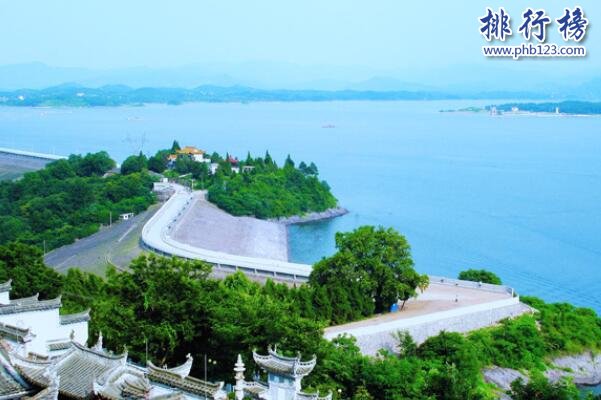
Dandong Dongshan Dashigai Mu.
The artifacts unearthed from the site include a variety of ceramic pieces, distinguished by their black-brown inner surfaces and red-brown or black-brown exteriors, as well as pottery containing fine sand with mica inclusions. Through subsequent excavations led by the Provincial Archaeological Research Institute in 1989, it was determined that these tombs date back to the Bronze Age. This finding significantly enriches the understanding of the bronze culture, burial practices, and societal customs prevalent in the Dandong region during that era.
As a designated national key cultural relic protection unit, the Dongshan Dashigai Tomb serves not only as a historical treasure but also as a crucial site for ongoing archaeological research. Its preservation and study provide invaluable insights into the ancient civilizations that once flourished in Northeast China. The area surrounding the tomb is also marked for protection, ensuring that its historical and cultural significance remains safeguarded for future generations.
Visitors to the site can appreciate not only the historical context but also the natural beauty of the region, with the nearby landscapes offering a glimpse into the ancient world that shaped this part of China.
Main Highlights: What to See at Dandong Dongshan Dashigai Mu
Dandong Dongshan Dashigai Mu is a fascinating archaeological site located approximately 9 kilometers northeast of Fengcheng City in Liaoning Province, China. This ancient burial ground is revered as a national key cultural relic protection unit, showcasing the rich history of the region.
Key Features
-
Bronze Age Significance: The site dates back to the Bronze Age, providing invaluable insights into the burial customs and cultural practices of the time. It is comprised of 25 burial mounds, with 10 located on the summit of a ridge and 15 on the adjoining plateau, covering an area of around 5,000 square meters.
-
Distinctive Burial Architecture: The tombs are characterized by their stone slab roofs and meticulously constructed burial chambers, oriented uniformly towards the northeast. Each grave measures approximately 2 meters in length, 0.5 meters in width, and 0.3 to 0.4 meters in depth.
-
Archaeological Discoveries: Excavations have revealed a variety of artifacts, including pottery, stone tools, and earthenware, highlighting the advanced craftsmanship of the period. Notably, pottery found at the site features a unique black-brown interior with red-brown or black-brown exteriors, reflecting the artistic styles of the era.
-
Cultural Context: The findings from Dongshan Dashigai Mu contribute significantly to the understanding of Bronze Age culture in the Dandong region, shedding light on burial practices and social structures of ancient communities.
-
Protected Area: The site is surrounded by a designated protection zone that extends 100 meters from the central tomb, with additional construction control zones ensuring the preservation of this archaeological treasure.

Dandong Dongshan Dashigai Mu.
Visitor Experience
Visitors to the Dongshan Dashigai Mu can expect a serene environment, perfect for those interested in archaeology and history. The site is not only a testament to the profound cultural heritage of the area but also serves as a peaceful retreat in the natural landscape of the region. Nearby attractions, such as the scenic Fengcheng Jiguanshan Mountain and the picturesque Dongtang Hot Springs, further enhance the experience, making it a must-visit for history enthusiasts and nature lovers alike.
Planning Your Visit: A Practical Guide
Visiting the Dandong Dongshan Dashigai Mu offers a unique opportunity to explore a significant historical site nestled within the scenic landscape of Northeast China. Here’s a practical guide to help you make the most of your visit to this ancient burial site.
Getting There
The Dongshan Dashigai Mu is located approximately 9 kilometers northeast of Fengcheng in Liaoning Province, specifically in Guanjia Village, Caohua Township. The site is set on a ridge at an elevation of about 589.4 meters on the southern slopes of the Laoheshan Mountain.
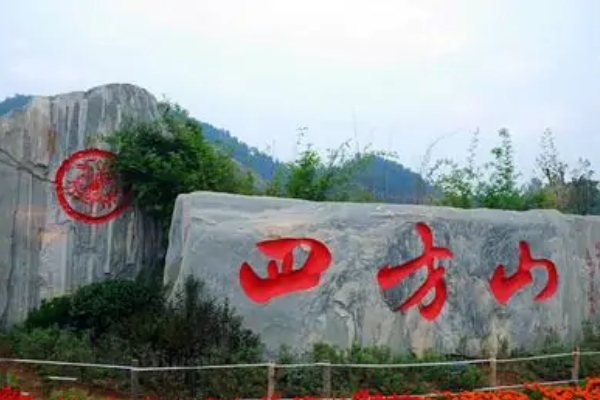
Dandong Dongshan Dashigai Mu.
To reach the site, you can take a taxi or drive from Dandong city, which is roughly 50 kilometers away. Public transport options may be limited, so consider arranging a private vehicle or joining a guided tour that includes this destination.
Best Time to Visit
The ideal time to visit the Dongshan Dashigai Mu is during the spring and autumn months (April to June and September to November). During these times, the weather is mild, making it comfortable to explore the outdoor site. Summer can be hot and humid, while winter temperatures can drop significantly, which may hinder your exploration efforts.
What to Expect
The Dongshan Dashigai Mu is a significant archaeological site consisting of 25 burial mounds, with 10 located on the hilltop and 15 on the slope below. The mounds vary in visibility, with some above ground and others partially excavated. The burial chambers are constructed with stone slabs, and the graves are oriented uniformly, with heads pointing northeast.

Dandong Dongshan Dashigai Mu.
Visitors will find a serene environment surrounded by natural beauty, which complements the historical significance of the site. The burial complex dates back to the Bronze Age, and artifacts such as pottery and stone tools have been unearthed, providing insights into ancient burial practices and culture in the region.
Guidelines for Visitors
- Respect the Site: As a protected cultural heritage site, it’s crucial to follow guidelines and maintain the integrity of the area. Avoid climbing on the burial mounds or disturbing the artifacts.
- Photography: Feel free to take photos, but be considerate of other visitors and the historical significance of the site.
- Bring Supplies: There are limited facilities at the site, so pack water, snacks, and any necessary personal items.
- Wear Comfortable Shoes: The terrain can be uneven, so comfortable walking shoes are recommended for exploring the area properly.
Nearby Attractions
To enhance your trip, consider visiting other nearby attractions, including:
- Chick Peak (鸡冠山): A scenic mountain area offering hiking trails and stunning views.
- Dongtang Hot Springs: Enjoy a relaxing soak in natural hot springs, known for their therapeutic properties.
- Fengcheng Caohua National Wetland Park: A beautiful wetland area perfect for birdwatching and experiencing local biodiversity.
Local Cuisine
Don’t miss the chance to try local delicacies in Fengcheng. Popular dishes to sample include:
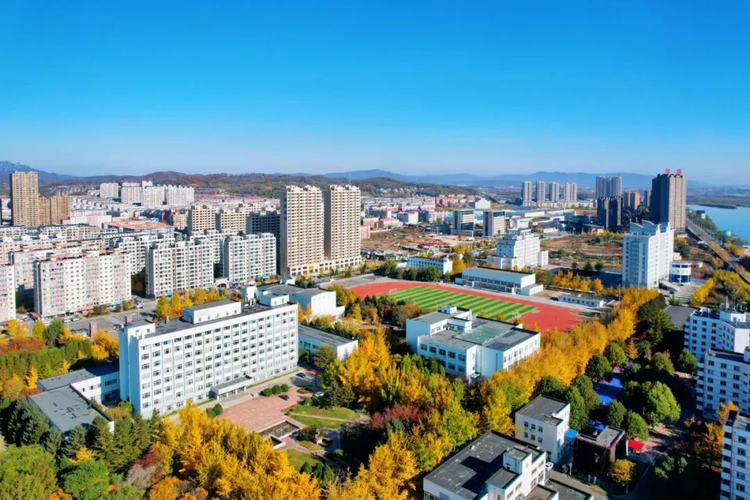
Dandong Dongshan Dashigai Mu.
- Dandong Shrimp: Known for its freshness and flavor.
- Braised Mushrooms: A local specialty often found in restaurants around the area.
- Sweet and Spicy Cucumbers: A refreshing side dish that complements many meals.
Conclusion
The Dongshan Dashigai Mu provides a fascinating glimpse into ancient burial practices and the rich history of the Dandong area. With careful planning and respect for the site, your visit will be both enjoyable and educational. Whether you’re a history enthusiast or simply looking to explore, this archaeological gem is well worth the trip.
Tickets, Hours, and Booking
When planning your visit to the Dandong Dongshan Dashigai Mu (东山大石盖墓), you’ll find that access is quite straightforward, and the ticketing process is simple. Here’s what you need to know:
Ticket Information
-
Admission Fee: Entry to the Dongshan Dashigai Mu is typically free of charge, making it an accessible site for all visitors interested in exploring this significant archaeological site.
-
Opening Hours: The site is open throughout the week, allowing visitors to explore at their convenience. It is advisable to visit during daylight hours for the best experience.
-
Guided Tours: While individual exploration is encouraged, guided tours may be available through local tourism offices or agencies. These tours often provide deeper insights into the history and significance of the burial site, including details about the artifacts and archaeological findings.
-
Accessibility: The site is located approximately 9 kilometers northeast of Fengcheng City, nestled in a picturesque mountainous area. Visitors should be prepared for a short hike to reach the burial mounds, which are situated on a hillside.
-
Transportation: Public transportation options may be limited, so consider renting a vehicle or hiring a local guide to ensure a smooth trip to the site.
-
Nearby Attractions: If you’re looking to make a day of it, there are several nearby attractions worth visiting. The scenic Chicken Crown Mountain and the tranquil Caohai National Wetland Park are excellent complements to your trip.
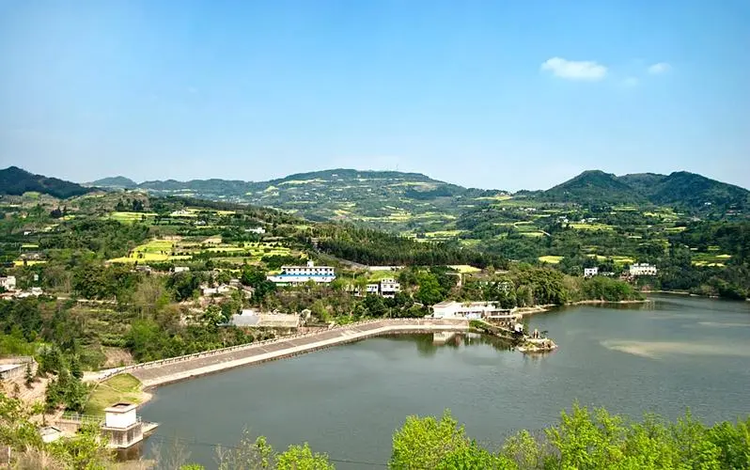
Dandong Dongshan Dashigai Mu.
Before you head out, it’s wise to check for any potential changes in opening hours or special events that may affect access. Enjoy your historical exploration of this remarkable burial site!
How to Get There
Getting to Dandong Dongshan Dashigai Mu is relatively straightforward, thanks to the well-developed transportation networks in the region. Here’s a comprehensive guide to help you navigate your way to this historic site.
By Air
The nearest major airport to Dandong is Dandong Langtou Airport (DAN), located approximately 15 kilometers from the city center. This airport offers domestic flights connecting to major cities like Beijing, Shanghai, and Shenyang. Once you arrive at the airport, you can take a taxi or use a ride-hailing app to reach the city center.
By Train
Dandong is well-connected by rail, making it accessible from various cities in China. The Dandong Railway Station serves as a hub for high-speed trains and regular services. From Shenyang, high-speed trains can get you to Dandong in about 2.5 hours, while from Dalian, the journey takes approximately 4 hours. Upon arriving at Dandong Railway Station, you can take a local bus or taxi to reach Dongshan Dashigai Mu.
By Bus
Long-distance buses are another viable option for reaching Dandong. The Dandong Long-Distance Bus Station offers services from cities across Liaoning Province and neighboring regions. Buses from Shenyang and other significant cities run frequently throughout the day. Once in Dandong, you can take city buses or taxis to travel to Dongshan Dashigai Mu.

Dandong Dongshan Dashigai Mu.
Local Transportation
Once in Dandong, the most convenient way to reach Dongshan Dashigai Mu, located about 9 kilometers northeast of the city in Fengcheng, is through a taxi or ride-hailing service. Alternatively, check local bus services that might operate routes towards the site. It’s advisable to confirm the latest bus schedules as they can vary.
Travel Tips
- Language: While some locals may speak basic English, it is helpful to have the name of your destination written in Chinese (东山大石盖墓) to show taxi drivers or locals.
- Navigation Apps: Consider downloading a navigation app that works in China, such as Baidu Maps or Didi Chuxing, to assist you with directions and transportation options.
- Plan Ahead: It’s wise to check train and bus schedules ahead of time, especially if you are traveling during peak seasons or holidays.
With these transportation options, reaching Dongshan Dashigai Mu is a seamless experience, allowing you to immerse yourself in the rich history and culture of the area.
Local Cuisine and Accommodation
When exploring the fascinating site of Dongshan Dashigai Mu in Dandong, it’s essential to complement your experience with delightful local cuisine and comfortable accommodation options. Here’s a guide to help you navigate your culinary and lodging choices during your visit.
Dining Options
- Local Delicacies
- Dan Dong Shrimp (丹东对虾): Famous for its sweetness and tenderness, this local specialty is a must-try. Many seafood restaurants around the city offer fresh shrimp dishes, from stir-fried to grilled.
- Mushroom Hotpot: Given the region’s rich forests, a hotpot featuring local mushrooms alongside fresh vegetables and meats is a popular choice, especially in the cooler months.
-
Spicy Pickled Cucumbers (甜辣黄瓜): This crunchy, tangy side dish complements many meals and showcases the local taste for balancing flavors.
-
Recommended Restaurants
- Liu Jia Zhuang (刘家庄): Renowned for its authentic Dandong cuisine, this restaurant offers a cozy ambiance and a wide selection of dishes, including the famous shrimp and local chicken dishes.
- Dongshan Restaurant (东山饭店): Located near the historical site, this eatery specializes in traditional Liaoning dishes, providing a perfect setting to unwind after your explorations.
- Caohe Village Eatery (草河乡小吃): For a more rustic experience, visit this small eatery in Caohe Village, where you can enjoy homemade dishes made with locally sourced ingredients.
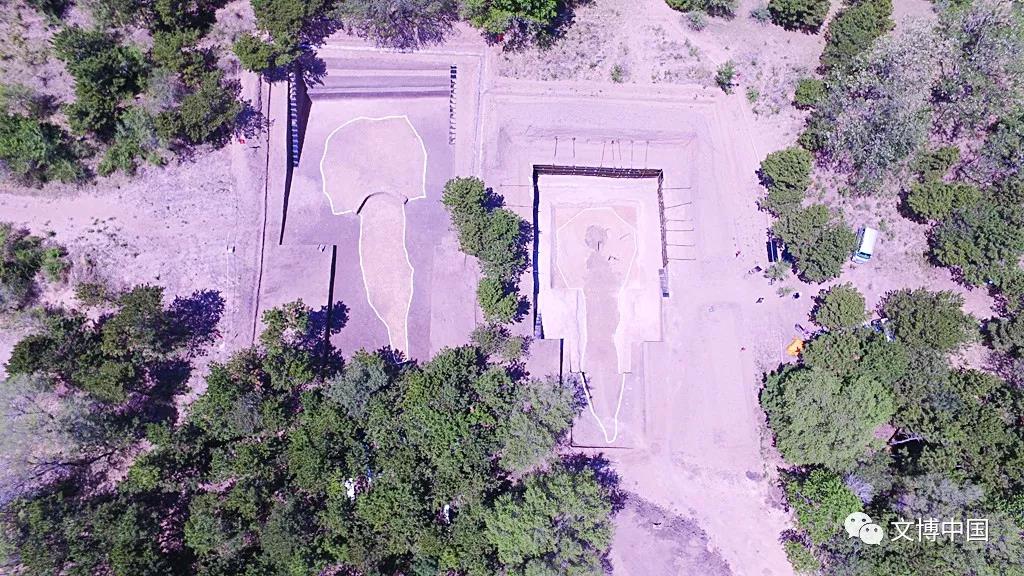
Dandong Dongshan Dashigai Mu.
Accommodation Recommendations
- Hotels
- Dandong Phoenix Mountain Hotel (丹东凤凰山大酒店): This 4-star hotel offers comfortable rooms with stunning views of the nearby mountains. It features modern amenities, a restaurant, and easy access to local attractions.
-
Liaoning Dongshan Hotel (辽宁东山大酒店): Situated conveniently close to Dongshan Dashigai Mu, this hotel provides spacious rooms and a restaurant specializing in local cuisine, making it an ideal base for your adventures.
-
Guesthouses and B&Bs
- Caohe Homestay (草河民宿): Experience warm hospitality in this charming homestay located in a tranquil village setting. Guests rave about the home-cooked meals and friendly atmosphere, making it a perfect retreat after a day of sightseeing.
- Fengcheng Guesthouse (凤城旅馆): A budget-friendly option that offers clean, comfortable rooms and a communal kitchen. It’s a great choice for travelers looking to meet others and share travel stories.
Tips for a Memorable Experience
- Reservations: During peak tourist seasons, it’s advisable to make reservations, especially for popular restaurants and hotels.
- Local Markets: Don’t miss out on visiting local markets for snacks and fresh produce; they provide a great opportunity to taste the local flavors without breaking the bank.
- Cultural Cuisine: Try to sample dishes unique to the region, such as the local wild herbs and seasonal vegetables, which can elevate your dining experience.
By indulging in the local culinary delights and staying in comfortable accommodations, your visit to Dongshan Dashigai Mu will be both enriching and enjoyable.
Frequently Asked Questions
Frequently Asked Questions about Dandong Dongshan Dashigai Mu
- Where is the Dongshan Dashigai Mu located?
-
Dongshan Dashigai Mu is situated approximately 9 kilometers northeast of Fengcheng City, in Guanjia Village, Caohua Township, Liaoning Province, China. It is located on the southern end of the Laohai Mountain at an elevation of 589.4 meters.
-
What is the historical significance of Dongshan Dashigai Mu?
-
This site is classified as a National Key Cultural Relic Protection Unit, dating back to the Bronze Age. It provides valuable insights into the burial customs and culture of the region during that era.
-
What can visitors expect to see at the site?
-
The site covers an area of approximately 5,000 square meters and features a total of 25 burial mounds, some of which are above ground while others are subterranean. The tombs are characterized by stone slab roofs and meticulously organized burial artifacts, including pottery and stone tools.
-
How can I access Dongshan Dashigai Mu?
-
Visitors can reach Dongshan Dashigai Mu via local transportation options such as taxis or buses from Fengcheng. It is advisable to check local travel schedules for the most convenient routes.
-
Are there any guided tours available at Dongshan Dashigai Mu?
-
Yes, guided tours may be available through local tourism companies. These tours often provide in-depth information about the historical context and significance of the site.
-
What are the nearby attractions to visit?
-
Nearby attractions include the Fengcheng Chicken Crown Mountain, Dongtang Hot Springs, and the Liaoning Fengcheng Caohua National Wetland Park, each offering unique natural and cultural experiences.
-
Is there an entrance fee for visiting the site?
-
While specific fees may vary, many archaeological sites in China do have nominal entrance fees. It is best to check in advance or inquire at the site.
-
What is the best time of year to visit Dongshan Dashigai Mu?
- The ideal time to visit is during the spring and autumn months when the weather is mild and conducive for outdoor exploration. Summer can be hot, while winter may bring snow, affecting accessibility.
Final Thoughts on Your Trip
Visiting the Dandong Dongshan Dashigai Mu offers a unique glimpse into the ancient Bronze Age, revealing the rich tapestry of history interwoven with the natural beauty of Northeast China. This archaeological site not only showcases intricate burial customs and artifacts but also serves as a testament to the cultural heritage of the region. As you explore the serene landscape where these ancient tombs lie, you can almost feel the echoes of the past whispering through the winds.
For travelers seeking a deeper understanding of China’s history, a trip to this remarkable site is an unforgettable journey. Surrounded by the lush scenery of Laoheshan Mountain and within proximity to other cultural attractions, Dongshan Dashigai Mu can serve as a rewarding highlight in your exploration of Dandong. Embrace the opportunity to connect with history and nature in a way that enriches your travel experience. Discovering such hidden gems not only enhances your knowledge but also inspires a greater appreciation for the stories that shape our world today.
